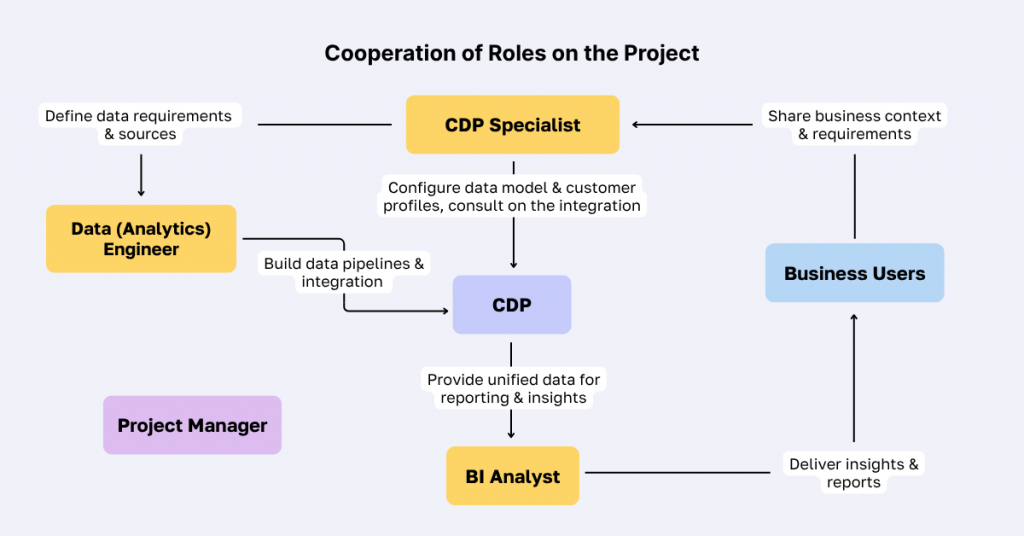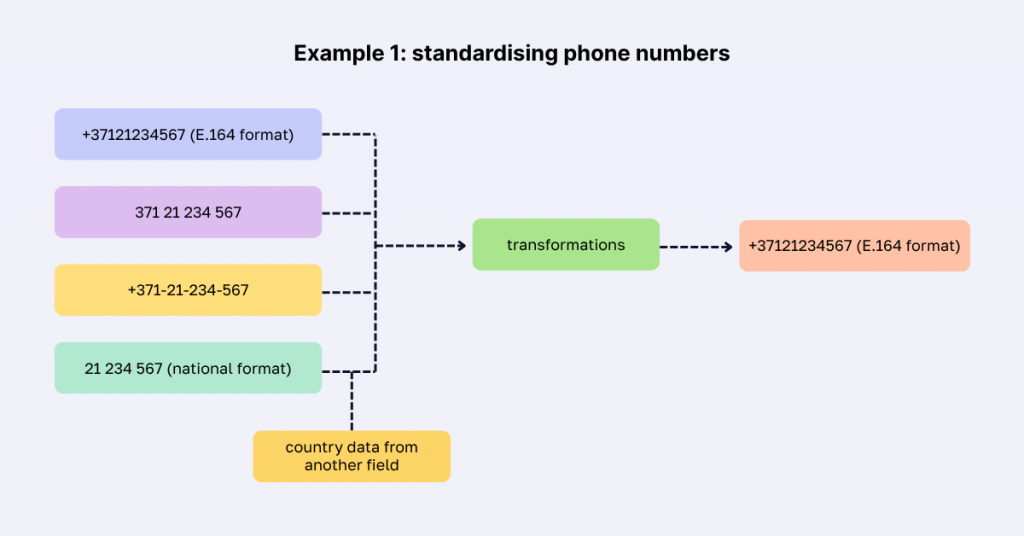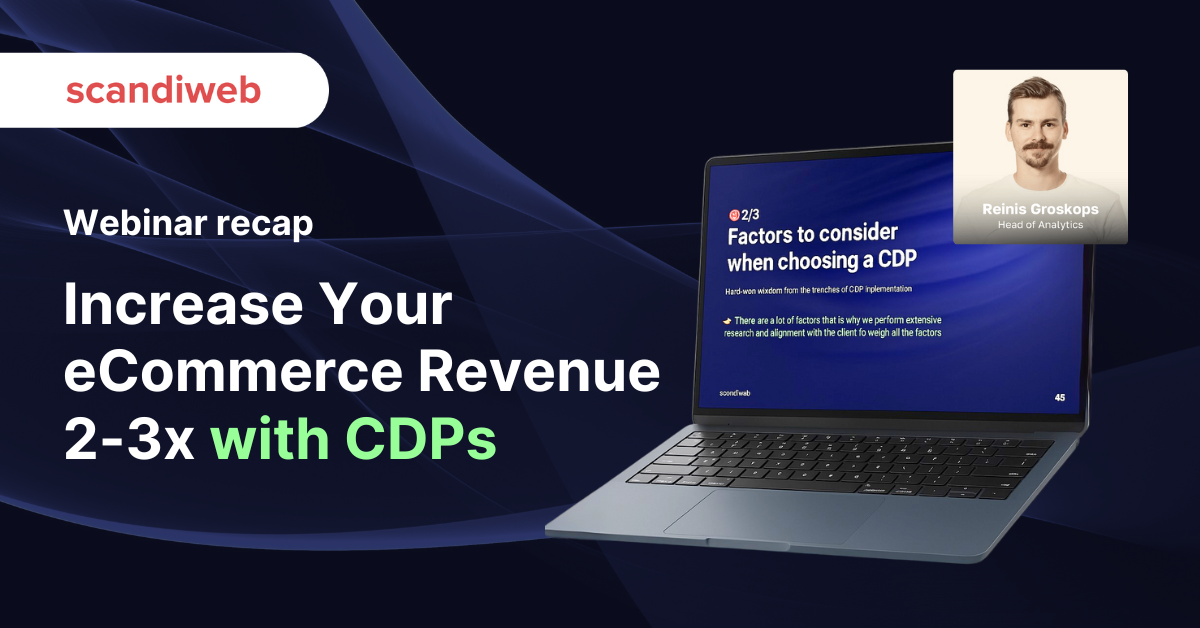Every click, product view, purchase, or support request reveals something about your customer. That is, if you know where to look. In eCommerce, customer data platforms (CDPs) are the power tools for understanding customer behavior and personalizing marketing, meanwhile improving overall customer experience.
Research shows that companies using CDPs achieve 2.9x greater YoY revenue growth compared to those that don’t. However, to achieve those results, you need to fully understand the topic. In our latest webinar, we broke down what a CDP is, what it does, how it works, and what it takes to implement one. Here’s what you need to know.
Watch the full webinar recording above, or read more for all the essentials on how CDPs can help eCommerce retailers grow their revenue.
What are CDPs and why should you care?
A customer data platform (CDP) is software that unifies customer data from various channels, such as eCommerce, mobile apps, POS, live chat, SEO, PPC, and more, into a single, centralized customer profile.
Unlike customer relationship management (CRM), data management platforms (DMP), or data warehouses, a CDP brings together customer data from all sources into one clear profile, online and offline, that stays updated over time. This makes it easier to personalize in real time and connect across channels.
It offers stronger identity resolution than CRMs (which focus on known contacts) and DMPs (which rely on anonymous data), and unlike data warehouses, CDPs are built for analysis and action.
| Feature | CDP | CRM | DMP | Data Warehouse |
| Primary Purpose | Unify and activate customer data for various use cases (marketing, analytics, customer service, product) | Manage individual customer interactions and sales pipeline | Aggregate anonymous audience data for ad targeting | Centralize and analyze large-scale organizational data |
| Data Type & Scope | First-, second-, and third-party customer data (online/offline, deterministic & probabilistic) | First-party transactional and interaction records | Mostly third-party and second-party cookies/IDs (anonymous) | Structured and semi-structured enterprise data (various sources) |
| Identity Resolution | Strong (stitching multiple identifiers to a single customer profile) | Moderate (focused on known contacts/accounts) | Weak (anonymous segments, audience buckets) | N/A (focuses on data integration, not individual identity) |
| Timeframe & Retention | Real-time to long-term (persistent customer profiles) | Real-time to medium (ongoing customer history) | Short-term (cookies expire; audience snapshots) | Historical (multi-year archives for analysis) |
Essentially, CDPs are built specifically for identity resolution and real-time personalization, which most CRMs and DMPs are not.
CDP core values
CDPs bring structure to messy customer data and turn it into something you can use. Here’s what they do best:
- Connect and combine data from all platforms (eCom, CRM, POS, ads, etc.)
- Merge customer info into one clear profile
- Build smart audience segments, including AI-driven ones
- Send personalized messages through email, ads, and more
- Track customer behavior, predict churn, and show segment performance.
Why CDPs are so valuable for customer retention and personalization
Businesses that use CDP show up to 90% reduction in time spent on segmentation, customer journeys, and reporting tasks.
CDPs also unify data across channels so teams can personalize in real time and act on insights without manual effort. They increase customer loyalty and lifetime value, reduce churn, support data privacy compliance, as well as save time through effective data management, all of which contribute to higher revenue and marketing performance.
Also read:
What is CDP? Guide to Customer Data Platforms for eCommerce
CDPs and AI
AI goes beyond being a trendy term in the context of CDPs; it serves as a practical engine driving better decision-making and more precise targeting. Predictive features, such as anticipating user churn and tailoring messages to be more timely, are some of the ways AI helps CDPs make better use of data.
Here’s how the top platforms today use AI for customer insights, making them more precise and actionable.
Predictive audiences and analytics
Various AI models can help businesses forecast the following customer behavior:
- Who is likely to make a purchase soon
- Who is at risk of churning
- Which customers are likely to respond to a campaign
- How much a customer might spend over their lifetime
- When a customer is most likely to buy again.
Some CDPs with these features are Segment (Twilio Segment), Salesforce Data Cloud (Einstein AI), Bloomreach, and Treasure Data.
Real-time customer data unification and identity resolution
Real-time data unification means bringing scattered customer data into one clear profile automatically and instantly.
AI connects the dots between different devices, email addresses, purchase histories, and more to recognize the same person across platforms. This gives you a complete, up-to-date view of each customer without manual cleanup.
Some of the platforms that have these features are BlueConic and Salesforce Data Cloud.
Automated personalization
Automated personalization uses AI to adapt every interaction to each customer without manual setup. It adjusts everything from messages and website content to product recommendations based on what users engage with the most.
Platforms like Salesforce Data Cloud, Bloomreach, and BlueConic use this to make personalization faster and more relevant.
Data cleansing and enrichment
Data cleansing and enrichment keep your customer data accurate and complete, so that it’s ready to use. In this case, AI takes care of routine cleanup by removing duplicates and fixing inconsistent and missing fields, so your team doesn’t have to.
Tools like Treasure Data and BlueConic’s AI Workbench help maintain high data quality without manual effort.
Dynamic segmentation
Dynamic segmentation uses AI to automatically group customers based on how they behave and what they’re likely to do next. It updates segments in real time, so you’re always targeting the right people with the right message.
Bloomreach, Segment, and Treasure Data make this possible with no constant manual updates.
Customer journey optimization
Customer journey optimization uses AI to track how people move across channels and fine-tune their experience as it happens. It spots drop-off points, adjusts timing, and delivers the right message at the right step, whether that’s on your site, in an email, or in-store.
Bloomreach, BlueConic, and Salesforce Data Cloud are some of the tools that can handle this in real-time.
Case study: how a New York retailer increased revenue with CDP
A luxury New York fashion retailer struggled with fragmented customer data across online, offline, and loyalty channels, making personalization difficult. Without a unified view, insights like preferences and purchase history had to be manually calculated, limiting effective segmentation and targeted campaigns.
After implementing a CDP, these were the outcomes:
- 2x revenue growth in 5 years
- 85% of revenue from re-engaged customers
- Over 40% of online sales driven by email and SMS
- Personalized customer service and in-store experience, knowing customer preferences
- Automated business reporting and insights, saving hundreds of hours of manual time
- In-depth customer knowledge, driving smarter product and marketing strategies across teams.
What it takes to implement a CDP platform
Implementing a CDP requires the right team and a solid tech stack. When you’re thinking about the team setup, these are the people to consider:
- Marketing, CRM, and eCommerce managers who define use cases and activation goals
- People who know the customer and the data
- Tech specialists: a CDP specialist, a data (analytics) engineer, and a BI specialist.
For a tech stack, you’ll need:
- A data warehouse to store and organize clean customer data
- A traditional or composable CDP
- Data transformation tools to clean and transform data if not handled inside the CDP
- BI tools (e.g., Tableau, Power BI, or Looker) for visualization and reporting.

Our scandiweb team has the expertise to manage every aspect of CDP implementation, from defining use cases and activation goals to handling the entire tech stack. Our team of specialists will ensure your data is organized and ready for action, giving you the best results.
How to choose the right CDP platform
Before choosing the right platform, you have to keep in mind that there is no “one size fits all” solution. Here’s what you need to consider when choosing the right tool for your business.
Types of CDPs
The two main categories, traditional and composable, offer different levels of flexibility, control, and ease of use.
Traditional CDPs are packaged, all-in-one platforms that come with built-in tools for data unification, identity resolution, and activation. They’re quicker to set up and easier to manage, making them a good fit for teams that want a ready-to-use solution without heavy internal resources. However, they offer less flexibility when it comes to customization.
Whereas composable CDPs are modular and built on top of your existing data warehouse. Instead of an all-in-one tool, you combine best-in-class tools for each function. This gives you full control and avoids vendor lock-in, but it requires a strong internal data team to manage setup and ongoing operations.
Factors to consider when choosing the right CDP for you
When you’re about to choose a CDP, there are many variables to consider, which is why we here at scandiweb work closely with the client and run an in-depth discovery to evaluate everything properly. These are the key factors to consider:
- Business goals you want to achieve (data unification, personalized marketing, retargeting in ads, or better customer insights)
- Pricing models based on tracked users, event volume, or data records
- Privacy compliance requirements like GDPR or CCPA
- Data source compatibility, as some CDPs offer native integrations, while others require external connectors or workarounds
- Data transformation needs, as some CDPs expect cleaned, structured data before ingestion
- Activation targets like email platforms or ad tools
- Identity resolution flexibility
- Documentation quality and access to onboarding resources.

Some of the top CDP platforms
- Salesforce Data Cloud offers strong integration with Salesforce tools and flexible data modeling, but has complex pricing, limited documentation, and non-persistent unified IDs.
- Bloomreach is user-friendly, cost-effective for small and medium-sized businesses, with solid support and documentation, though it has a learning curve and less intuitive data validation.
- Segment excels in integrations and data governance, with native messaging and AI features, but lacks built-in reporting and can become costly with scale.
- Insider CDP includes built-in automation and a strong UI, but it offers fewer integrations and has pricing and stability issues.
- Adobe Experience Cloud is powerful but best suited for companies already using the full Adobe stack.
- Pimcore is open-source and flexible, ideal for custom setups, but has fewer ready-made connectors.
- RudderStack is warehouse-native, giving full data ownership and flexibility, but requires technical expertise for setup and maintenance.
Summary: why a CDP is a must for any eCommerce store
Retailers often struggle with disconnected systems and scattered customer data. This limits the ability to satisfy customers and slows down personalization efforts and business decisions. Bringing online and offline customer data together solves a key challenge for businesses. CDPs provide the central system needed for this.
Take, for example, the New York luxury fashion retailer. With the help of our CDP experts and all the right tools, we were able to increase their revenue more than twice. In-depth customer knowledge is one of the driving factors for creating smarter product and marketing strategies.
With the rising role of AI in marketing, CDPs are becoming even more effective for delivering true data-driven insights and actions. Therefore, retailers that don’t use CDPs in their eCommerce are losing to their competitors.
Want a clearer view of your customers? Get in touch with us and see how unified customer data leads to more effective marketing and stronger customer loyalty, producing better business results.


Share on: